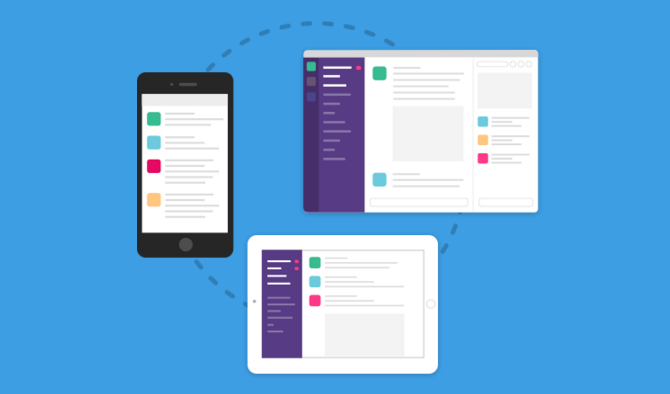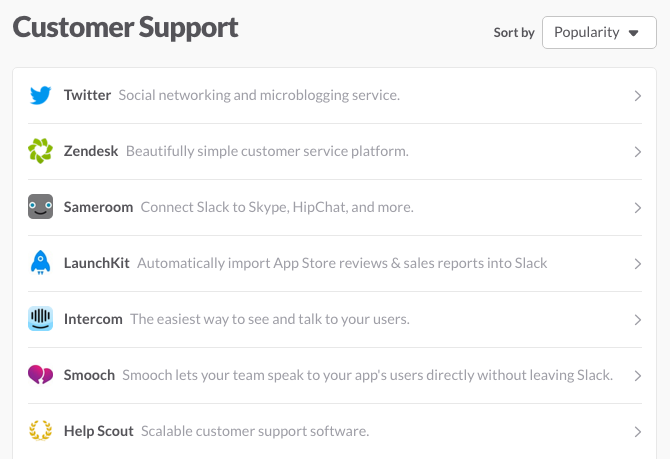In the few short years since its arrival on the scene, Slack has grown from being a niche tool of the technorati into an increasingly omnipresent team communication solution. It’s also managed to rack up an impressive $3.8 billion valuation along the way, so its immediate future looks more than secure.
Thanks largely to its incredible array of integrations, Slack is touted as a blisteringly modern solution to all manner of use cases these days, with customer support being very much one of them. Outside of all the hype, however, is Slack really ready for prime time as a customer support channel in its own right?
In this piece, we’ll step through the promise of the software, criticisms of it as a support channel generally, and practical options for working it into your current support options.
Let’s start with a quick look at what all the fuss is about.
The Allure of Slack as an Email Killer for the Tech-Savvy
Slack has managed to hit quite the sweet spot for companies worldwide, and its growth rate is off the charts. The initial allure of the software largely boils down to four key factors:
- The interface is incredibly slick, and a genuine pleasure to use.
- Everybody hates email, and Slack promises to remove mountains of unnecessary back and forth in that regard.
- It’s amazingly extensible, and can hook into pretty much any external application worth its salt.
- The pricing is eminently reasonable.
Put all that together, and it’s no surprise that the adoption rate has been huge. Look around the web and you’ll find story after story of teams – such as Hover and Usersnap – happily using Slack to weave together information across departments.

There’s definitely a potential role for Slack in most organizations, but is it a customer support one? Let’s start with the case against.
The Case Against Slack as a Primary Customer Support Channel
James Gill over at GoSquared has made perhaps the best general case against handling customer support via Slack to date. The whole article is well worth a read, but the basic points boil down to the following:
- Slack is a great tool to use internally, but not necessarily cut out for customer-facing interactions.
- Non-technical users are unlikely to even consider Slack as a support channel.
- Using Slack channels for support potentially gets messy quickly as multiple voices chime in.
- Making Slack the primary support tool risks siloing customer support data longer term.
These are all incredibly valid criticisms. Even a quick look at how Slack handle their own customer support shows that they’re considering a similar set of concerns. They’re using a carefully considered mix of Zendesk integration, Slack itself, and a variety of other tools and processes to get everything lined up and scaleable.

How Slack Can Be Used as a Customer Support Tool
With the above points in mind, two primary ways of working Slack into the mix as a customer support tool emerge. Let’s move on to look at them in turn.
1. Using Slack to Innovatively Interact With Tech-Savvy Customers
Though some companies are tentatively switching over their entire customer support stack to Slack, it’s not going to be a runner for the majority. What is emerging as an interesting option, however, is using Slack to give tech-savvy customers structured access to support teams, and creating new types of customer communities along the way.
This is a trend that’s starting to become visible across the web. In the WordPress ecosystem, we’ve already seen specific theme developers leaning this way. WP Curve also have a great roundup of other companies using Slack to create targeted communities and elegantly help with tasks such as customer on-boarding.
These options aren’t necessarily the right approach for all firms, but they can provide a valuable additional, non-traditional, support channel in many cases. Kevin DeWalt has a good breakdown of the type of scenarios where it makes sense over on his blog.
2. Using Slack Internally Behind the Scenes With Wider Customer Support Tool Integrations
The second main option is integrating Slack with your other existing customer support solutions. This enables you to make notifications and communications substantially simpler and more streamlined for your team behind the scenes.

As we mentioned earlier, this is basically the approach that Slack themselves take, and there’s no shortage of fully-featured customer support integrations in the Slack app marketplace to do the job. As a quick look at the list shows, all the major players (including Zendesk, Help Scout, and Desk.com) are supported, along with an impressive list of further niche applications.
Conclusion
As the range of integrations available for use with Slack grows, it’s becoming an increasingly convincing piece of communications infrastructure for businesses of all sizes around the world. If you haven’t yet taken it for a spin, there’s no better time than today to check it out.
As a primary support channel in its own right, the jury is still very much out on Slack, but it’s made a clear case for itself in two critical respects:
- As an innovative way of communicating directly with tech-savvy customers.
- As an incredibly useful internal communications tool you can easily integrate with pretty much any existing customer support solution.
We’d love to hear if you’re already using Slack to handle aspects of customer support, and what your experience to date has been. Get in touch via the comments below and let us know!
The post Can Slack replace email as a Support Channel? appeared first on HeroThemes.
